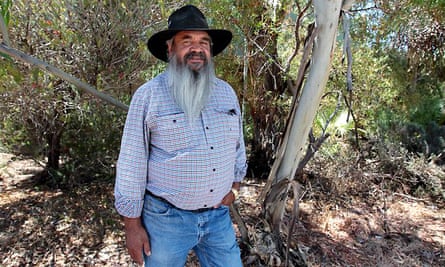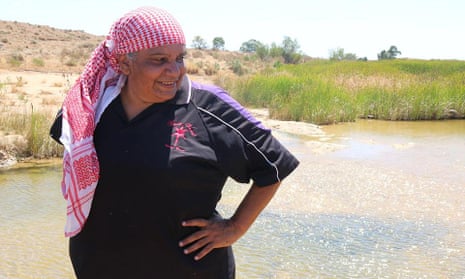A South Australian cattle station that is part-owned by the state’s Liberal party director and next to an Indigenous Protected Area has been provisionally selected as the site of Australia’s first nuclear waste dump, outraging traditional owners.
Wallerberdina Station near Barndioota, just under 500km north of Adelaide in the Flinders Rangers, was one of six sites nominated for the proposed dump last year. It is now the only site under consideration.
The resources minister, Josh Frydenberg, said on Friday that the site had been “shortlisted” following a four-month consultation process and that the final decision would be made within 12 months.
“While encouraging levels of support were identified across a number of these sites, Barndioota displayed a broad level of community support for moving to the project’s next phase,” he said.
But the local Indigenous community do not support the proposal. Adnyamathanha traditional owners asked the federal government to reject the nomination of the site in November, saying that the proposed dump site was near significant cultural sites, including Hookina Creek, which is a women’s place that is also a registered heritage site.
Adnyamathanha Traditional Lands Association (ATLA) chief executive Vince Coulthard said he was “totally disgusted” by the announcement.
“This is our land, we have been here forever and we will always be here and we are totally opposed to this dump,” he said.
Coulthard said there had been minimal consultation with traditional owners and described the decision as “cultural genocide”.

“ATLA is disgusted that the only contact they have had is a short meet and greet-type session at the last AGM,” he said. “We believed they were going to meet with the board in an official capacity, prior to any announcement happening. But this certainly didn’t happen.”
Adnyamathanha woman Regina McKenzie said that hearing the site had been earmarked felt like hearing news of a death.
“It was shock and then a lot of emotion, myself and my sister said it’s like getting news of a death, that’s the kind of emotion we felt,” McKenzie told ABC news on Friday.
“Our culture in that area is being ignored, it’s not good for our area, I don’t think, it’s something we will fight against, we don’t want a waste dump in our area whatsoever.”
She told Guardian Australia last month that proposing to build the site was an attack on the Indigenous belief system.
Nearby Yappala station was declared an Indigenous Protected Area in 2014.
Frydenberg said an independent Indigenous heritage assessment, conducted in consultation with traditional owners, would be undertaken as part of the next phase of the project, and that the government would talk to Indigenous stakeholders “to explore local ecotourism opportunities.”
He said the resources department would set up a local office to conduct the detailed design, safety, environmental and technical assessment, and to conduct further community consultation.
The community will also get $2m for local projects. If it is confirmed as the final site, it will get $10m.
Kokatha-Mula elder Sue Coleman-Haseldine, co-chair of the Australia Nuclear Free Alliance, said the decision was devastating.
“We’ve already been poisoned through the Maralinga bomb tests,” Coleman-Haseldine said on Friday, referring to the British nuclear tests in the Woomera Prohibited Area, 675km west of Barndioota, in the late 1950s and early 1960s.
“Do we really need any more nuclear, whether it’s low level or not? There’s always the chance of accidents.
“I feel really sorry for the [Aboriginal] people who have to go through this and the other people who have to live under a nuclear cloud.”
The site would store low- and intermediate-level nuclear waste, such as material left over from medical procedures. That waste is currently stored at 100 small facilities around the country and federal governments have been trying, unsuccessfully, to find a site for a central storage facility since the 1990s.
Former South Australian senator and current state Liberal party director, Greg Chapman, who part-owns the Wallerberdina Station, told ABC radio in Adelaide that he was surprised the federal government had narrowed its options down to one site.
While in parliament, Chapman chaired the select committee that recommended the country’s low-level nuclear waste be stored in a single facility.
“So it’s taken some 20 years to get to this stage and they’re still considering a decision,” he said.
The preliminary findings of the South Australian royal commission into the nuclear fuel cycle found that nuclear waste storage and disposal facilities could provide a substantial economic benefit to the state, but recommended against the state having its own nuclear power plants.

Comments (…)
Sign in or create your Guardian account to join the discussion